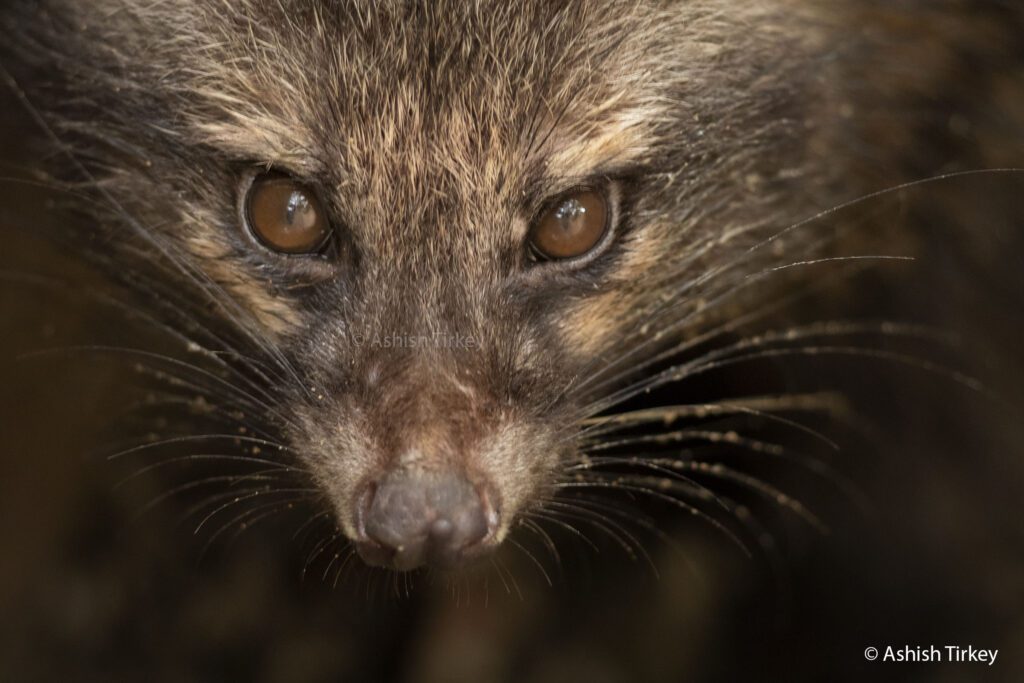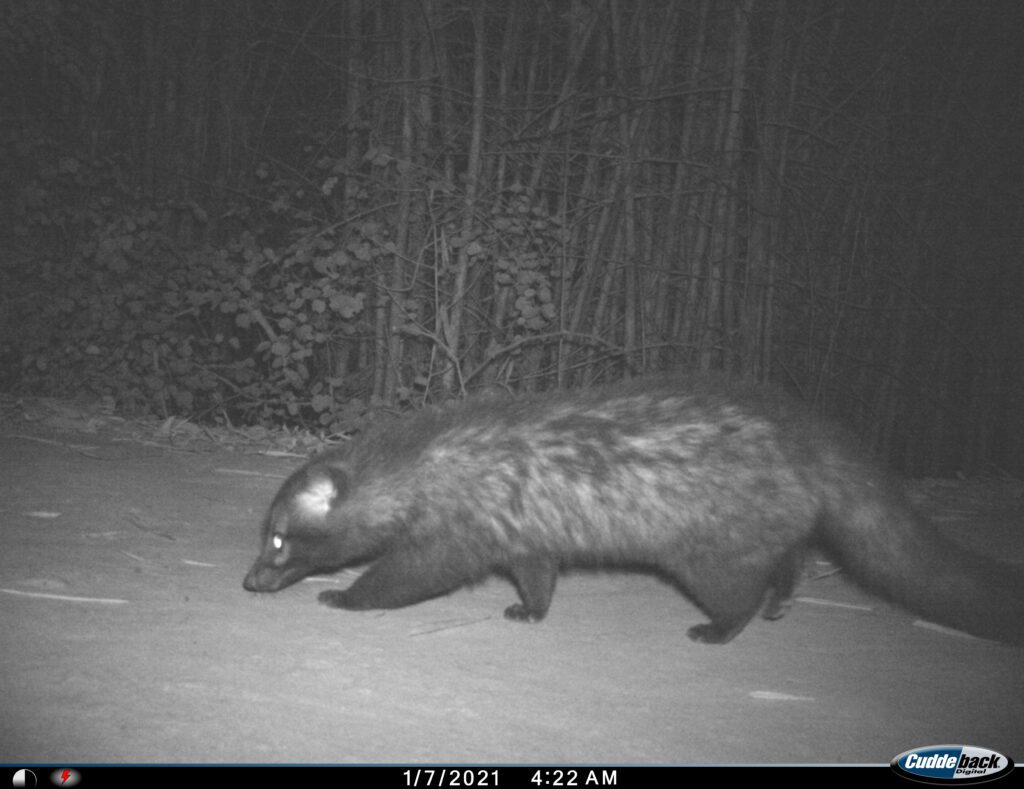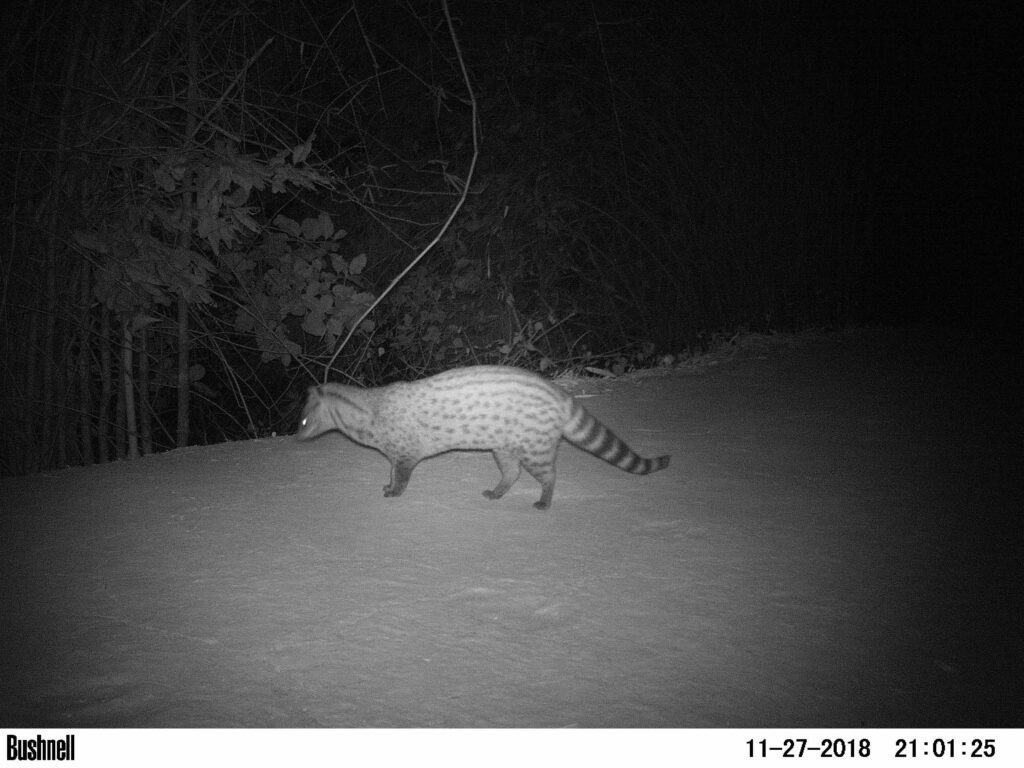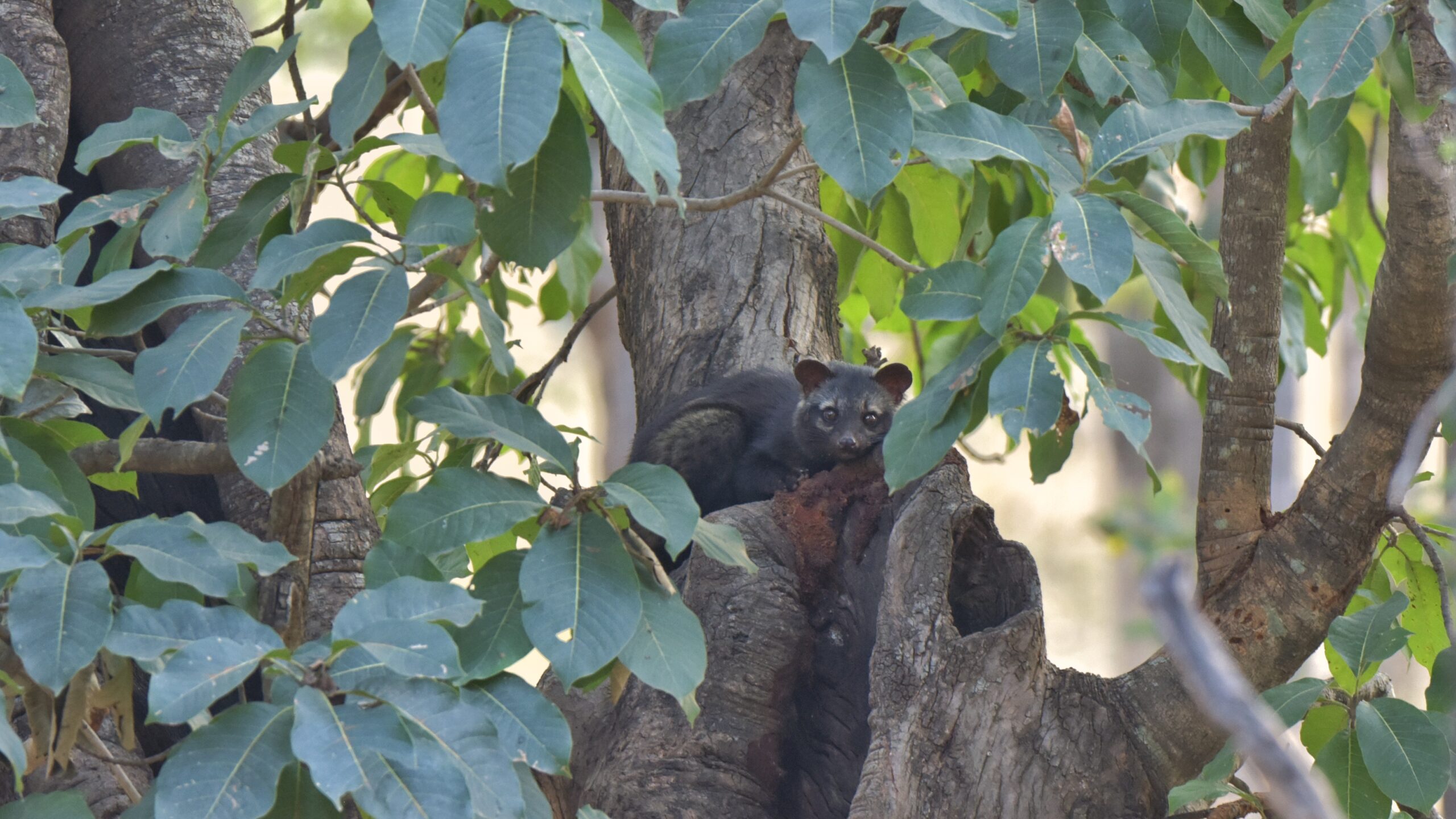Of all the unseen wonders of the nocturnal life, there’s one mammalian carnivore that can be spotted late evenings, night, and early morning hours. Due to their small cat-like size, they are often mistaken as a member of Felidae and referred Civet cats but in actual they are called just ‘Civets’ belonging to Viverridae family, whose close relatives are mongoose and hyenas.
There are 8 different species of Wild civets found in India out of which Common Palm civets and Small Indian civets can be spotted across the sub-continent. They are omnivorous and some species are frugivorous too.
All our Pugdundee Safaris lodges home these two species and our in-house naturalists have captured them on camera traps as well.
In fact three of our lodges, Pench Tree lodge, Denwa Backwater Escape, Satpura, and Treehouse hideaway, Bandhavgarh are excellent spots to encounter them during the fruiting season especially, summers. Night Safaris in buffer zones which started in 2021 are a great way to look for civet cats. It is common to encounter Palm Civets and occasionally also Small Indian Civets on these night safaris.
Here we share with you some information on these elusive beings from the dark.
Common Palm Civet
Weighing less than 4 kgs, Palm Civets are the most common of all.

They are both arboreal and terrestrial, frolicking late evenings and at night, in a range of habitats including, scrub forest, evergreen, tropical deciduous forests, and even rooftop of houses and abandoned buildings.
They are absent in the arid zone (Some parts of Gujarat & Rajasthan), and the high Himalayan range of our country.

Their black-brown or creamish dark coat is easily identified with white patches across the forehead, ears, and below the eyes. Three longitudinal stripes run across the upper side of their body followed up to its tail.
They are omnivorous and are fond of fruits, nuts, honey, coffee, and palm thus being named the Palm Civet.
Best viewed: Central Indian National parks Satpura, Pench, Kanha, Tadoba, Panna, Bandhavgarh and other parks as well.
Small Indian Civet
Small Indian civets can be easily differentiated from Palm civets due to their pale yellow and brownish grey coats. It has a remarkable black and white ringed tail, and dark spots across its body except for the back. The longitudinal stripes are more clearly visible in the Small Indian Civet and vary between three to five lines.
They are absent in the high Himalayan range and found in the rest of the country. They prefer a scrub, grassland, agricultural area near human habitation.
Their diet mainly includes fruits, roots, reptiles, amphibians, smaller birds, etc.
From head to tail tip the body length varies between 60-80 cm less than palm civet which is 80-100 cm.
Best Viewed: Small Indian civets can be seen at Bandhavgarh, Kanha, Satpura, Panna, in Central India. Also in Western ghats Maám at Bandipur, Madumalai, Annamalai, Br Hills, Parambikulam.

The other six species are are follows:
Binturong
It is the largest civet cat in India, weighing around 10-14 kgs found in the northeastern parts of India.
It has a dark furry coat, thick tail, and easily identifiable white edge above its ears.
Large Indian Civet
As the name says they are large dog-sized civets with short legs inhabiting the land and are solitary in nature. It has a distinctive dark stripe with white bands across its neck up to the shoulder.
It weighs between 5 to 10 kgs and is rarely spotted across North-East India.
Malabar Civet
Very little is known about the Malabar civet which is endemic to the Western Ghats, thus listed Critically endangered in the IUCN red list.
It’s a bit similar to Small Indian civet but larger in size; weighing up to 8 kgs and head to tail length 80-90 cms.
Small Toothed Palm Civet
Another resident of the North-East India, Small Toothed Palm Civet is also called Three Stripe Palm Civet due to its striking three dark lines on its back, up till its rump. It has a tawny or buff-brown coat with a greyish head and a unique white line running vertically between the eyes to the nose.
Masked Palm Civet (Himalayan Palm Civet)
Masked Palm Civets resemble other palm civets and also the Yellow-throated Martin, but doesn’t possess any stripes or spots in its body.
It has a brown or dark coat and a greyish belly. The name masked is due to white blotches across its face. Its range varies from the Himalayas to North East India and also in the Andamans in the evergreen and mountain forests.
Brown Palm Civet
A rainforest dweller, endemic to the Western Ghats, the Brown Palm Civet possesses a chocolatey brown coat with a darkish head, legs, and tail.
They are frugivorous and arboreal. They are best seen at Kalakkad-Mudanthurai national park and Castle rock in Goa.
@@@@@@@@@@@@@@
Contributed by: Ashish Tirkey, Manager, Tree House Hideaway, Bandhavgarh
Edited by: Natasha Sinha, Content Curator, Pugdundee Safaris

